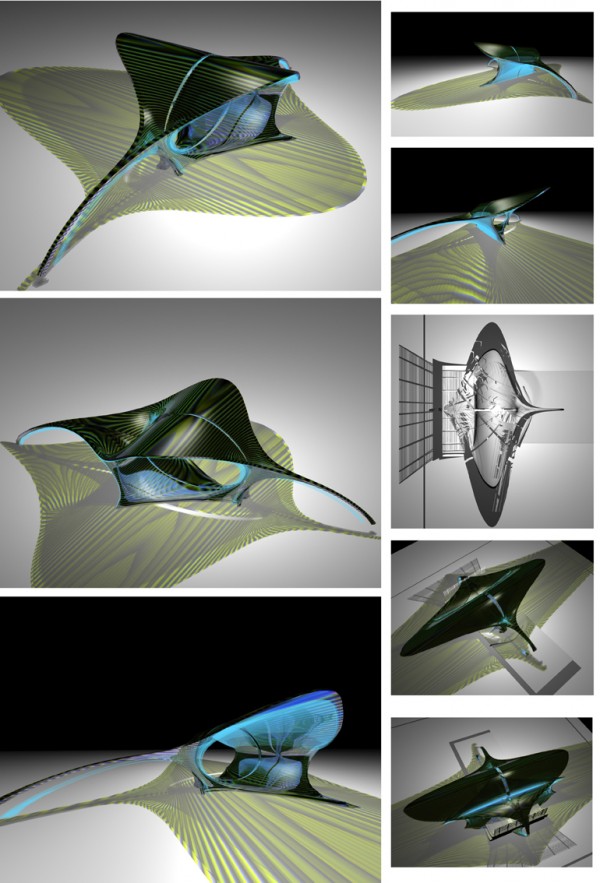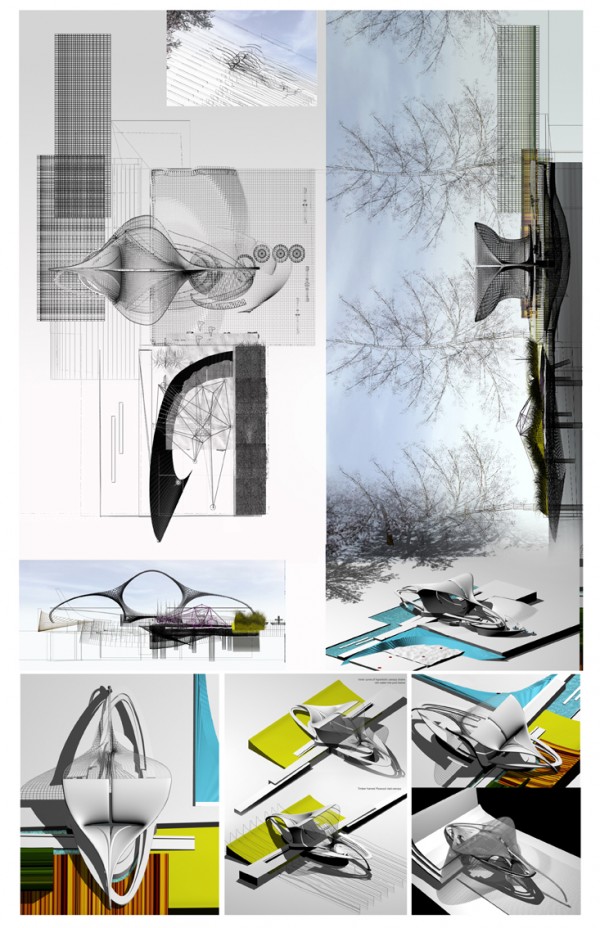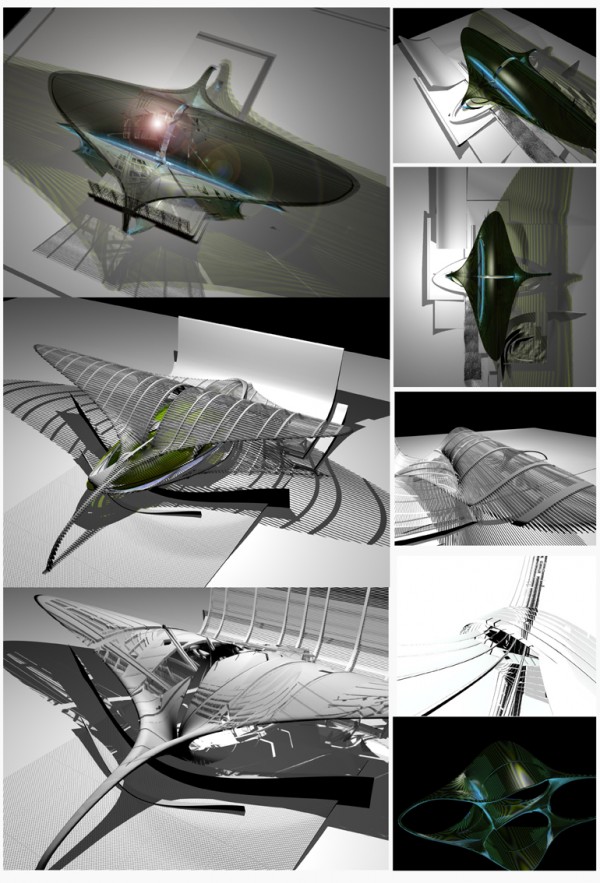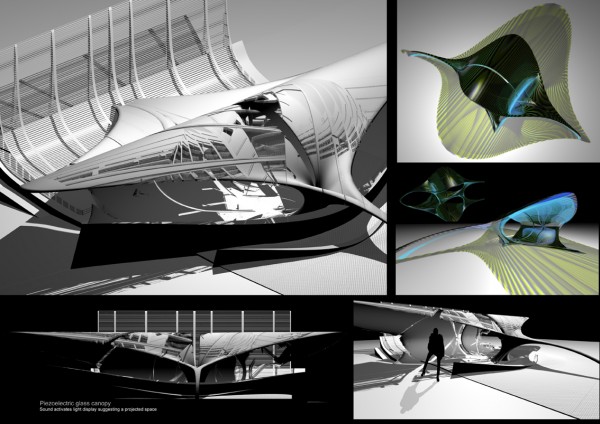The Piezoelectric playground is a temporary structure designed by Margot Krasojevic for the Pioneers park in Belgrade, Serbia. It will be used as a bandstand and playground.
The canopy is a hyperbolic structure which folds in on itself draining rain water into the pool directly underneath it which diffracts light (acting as a prism) further magnifying the activities within the canopy structure. Movement agitates the semicondcuting piezoelectric crystal disks which as a result generate an electric current within the structure itself, this voltage controls the holographic glass clad canopy and optic fibre light projections choreographing a series of patterns which illuminate the immediate context according to the music or events occurring within the canopy. ; with the possible use of vibrating piezoelectric crystals releasing hydrogen and oxygen from the water molecules, piezoelectrochemical effect, supporting the hope that energy can be used to generate power from any structure which vibrates and produces noise, from passing traffic, children playing etc.
The canopy’s geometry blurs the relationship between interior and exterior spaces; as it is a surface with one boundary, mathematically the form is non-orientable which focuses on the event as a way of defining it’s physical presence on site.
The wooden frame’s looping structure is clad in reinforced optical glass tubes which house optic fibre cables that direct the light through the canopy, the light patterns and strength is influenced by the circuit of piezoelectric crystals and diodes to change charge direction therefore continually altering the direction of light and intensity of projections depend on movement throughout the canopy or sound reverberations from music.
The canopy never lights up in the same way twice and our perception of the canopy glowing and projecting light describes a very different environment every time it is used as either a playground shelter or outdoor concert canopy.
This project was inspired by Thomas Wilfred’s Clavilux projects from 1930.


















